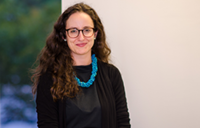Seemingly out of the blue, one of my favorite students cussed me out in the middle of class. I have spent hours building a relationship with him and felt hurt and defensive -- until I heard his story of grief, loss and trauma. Teachers know that behind such outbursts lie countless unmet needs, especially mental health ones. In my ten years of working with youth in Philadelphia, Glendale, Rosemead, and South Los Angeles, I have seen students face various barriers to learning: learning disabilities, economic hardship, mental illness, neglect, abuse, and homelessness. They cope in different ways: Some sleep, others yell, some slam doors, others threaten their peers and lash out at school staff. Few get access to the long-term, quality care that they need.
Currently, education agencies are working toward a ratio of one school psychologist for every 700 students. In our neediest schools, this is simply not enough. Lack of adequate services puts our young people at a significant disadvantage and sets unrealistic expectations for school staff who are not trained in counseling and interventions. Simply put, as a teacher, I can't do my job effectively if my students' critical mental health needs are not met. The 2008 National Survey of Children's Exposure to Violence (NatSCEV) shows that children are more likely than adults to be exposed to violence and crime. How can we possibly expect youth who are facing debilitating trauma to catch up with their healthier peers without adequate care?
It was clear to me when I began teaching in Watts, South Los Angeles, that most of my 11th grade students were reading at an elementary school level, many struggled with anger management, and all faced the daily challenge of living in poverty and the constant threat of violence. Take my student James, who, one day, casually told me that his cousin had been killed the night before. For the next month, I watched James attempt to cope as he became more and more impatient and distracted. Despite this, he managed to stay in school and keep up his grades.
At the end of the year, I took James and other students to an annual, student-led social justice conference in Boyle Heights, on the east side of Los Angeles. One of the workshops, "PTSD in the Hood," encouraged participants to share their personal experiences with gun violence. As they told stories of unthinkable violence, like seeing a person's brains splattered on the sidewalk after a shooting, most said, "I am OK." Others couldn't find a way to get over the trauma. That day I shared with one of my students that I too have been impacted by senseless violence, having witnessed the Bosnian civil war as a child. I knew then that this shared experience connected me to my students, and that we must provide more opportunities for youth to process these powerful experiences. James is now a graduating senior, a gifted student who is preparing to enroll in college in the fall. But what about the countless other young people in Watts and elsewhere who may not be as resilient or have a support network to help them?
Research shows that young people in some urban areas are more likely to develop symptoms of PTSD than soldiers returning from combat, due to exposure to long-term trauma which can lead to complex PTSD. On a practical level, I believe that addressing PTSD means the following: providing a therapy room, where students can decompress and speak to a professional outside regularly scheduled therapy; hiring more full-time therapists experienced in working with at-risk youth, so that school psychologists can devote more time to direct counseling; and hiring within the community whenever possible, to create an authentically welcoming and culturally responsive school culture.
I also believe that our curriculum and student activities should provide ample opportunities for students to examine their own lives. We can facilitate this process in schools through service learning projects, meaningful research, and more conferences like East Side Stories. Exposing our young people to such opportunities empowers them to take center stage and address community issues in partnership with local organizations.
If we truly wish to help urban youth thrive, we must face the fact that they need consistent, quality counseling and a real opportunity to heal. Like James, young people need to know that their struggle is not an isolated incident but a public health concern that we are ready and willing to address as a community of educators and mental health practitioners.
Julija Zubac is an educator in the Los Angeles area. She is a Teach Plus Teaching Policy Fellow.
